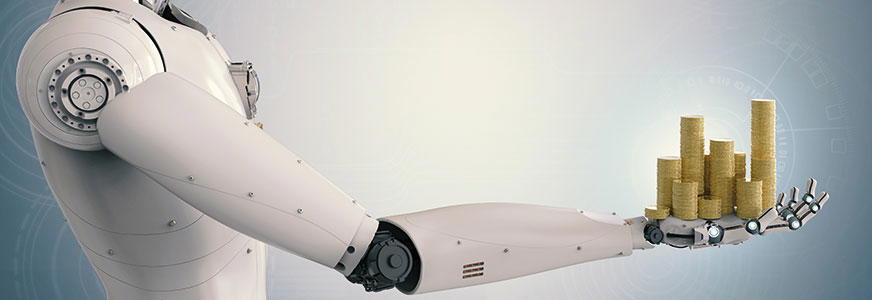

- Martin Bellin
- Board Member, Nomentia
‘Robo’ treasury is one of many buzzwords that have topped headlines in recent months and caused great excitement – but also a fair bit of uncertainty amongst treasurers. If we want to believe the hype, then the treasurer’s days are numbered, and we are all to be replaced by faceless, super-efficient and infallible machines producing copious and flawless results. So how much of this is true? Do treasurers need to fear for their future?
What is indisputable is that an ever more challenging, competitive and dynamic business environment has placed completely new strains on treasury departments and has confronted them with a never-before-seen need for vast quantities of data and speedy processing thereof. The continuing digitisation, cost pressure and new requirements in line with the nature of the markets and customer expectations mean that businesses need to use their resources more efficiently than ever before. A number of new technologies are hailed to provide the answers to all these challenges:
Robotics Process Automation is what is commonly referred to as ‘robo treasury’. In reality, it has very little to do with your average 1980s cyborg fiction. What we’re talking about is process automation involving the use of robotics software, so-called bots, that companies can use a bit like a virtual workforce. Bots are trained to use applications, without actually modifying the applications, and follow rules-based workflows in much the same way a human employee would. This provides automated support for manual, repetitive tasks, mainly in situations where interfaces have yet to be automated and data needs to be accessed and processed manually.
Together, all these new technologies present enormous potential. But where do they actually make sense? How and which tasks are robots taking over? Answering this question also brings us closer to answering the question of whether or not treasury’s days are really numbered.
The common denominator in any task to be carried out by machines instead of humans is the availability of large quantities of data as well as the emergence of patterns, based on which decisions can be made artificially. Robots are able to consolidate and analyse data much more quickly than a human being. Consequently, they are useful wherever we are looking at repeatable processes involving large quantities of transactions. Cash management and payments in the sense of cash allocation or clearings and postings are prime examples. Other areas that can be, or largely are, automated include the processing of account statements, cash positioning, cash forecasting or payment fraud detection.
Does all of this mean treasurers are slowly but surely becoming redundant? Yes and no. Treasury in the way it is practised in many businesses today is going to change and some elements are going to disappear. In future, we will no longer need big teams manually manipulating data. There is no turning back the clock and digitisation and automation are set to gain further ground. In some disciplines they will take over treasurers’ jobs, simply because they do them faster, are able to process vastly more data and are much more cost-efficient. But all that means is that the job profile of treasurers is going to change, not that they are going to disappear.
While treasurers might no longer be needed to manually handle large quantities of data, treasury is ultimately much more complex than that. There are and will always be components where human strategic thinking is and will remain indispensable. While many decisions can be made based on patterns, not all of them can. This includes, for example, detailed, strategic funding decisions as well as sophisticated risk mitigation and deciding on and judging a company’s risk appetite. It also includes the monitoring and implementation of regulatory changes that have only been increasing and are set to play a vital role in treasury. The same goes for monitoring sanctions or embargoes and acting on detected irregularities in connection with payment fraud.
Treasurers are and will remain of great tactical and strategic importance. Optimised resources will simply serve to underpin these high-level decisions and strategies. Technology can do the groundwork, but it needs a human strategist to steer in the right direction. Treasurers are going to have to adapt but there is little concern that they will not be able to. After all, they have reinvented themselves before – more so than any other financial discipline. The last few decades, in particular the aftermath of the 2008 financial crisis, are evidence of that. So for now, we need not fear a full-blown cyborg treasury takeover.



